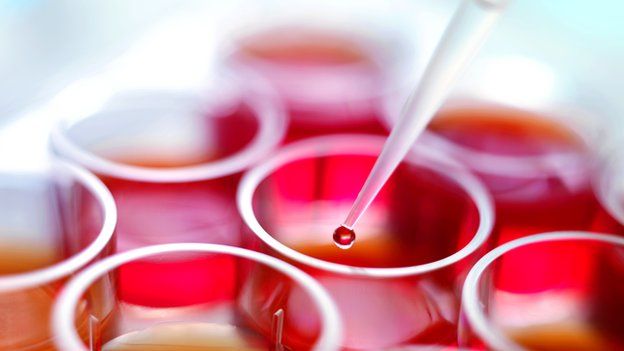Stem cell transplant death - what went wrong
- Published

Doctors at London's renowned children's hospital - Great Ormond Street - were baffled when a treatment that they routinely used to treat sick children with cancer inexplicably stopped working.
Eight young patients to whom they had given bone marrow transplants were showing no signs of improvement - some of the children were deteriorating.
Four of the children died and alarm bells rang.
The hospital stopped the therapy that it had, until then, been successfully using since 2003 and launched an urgent investigation.
Flawed treatment
The bone marrow transplants were meant to give the sick children a buffer against the unwanted side effects of the chemotherapy treatment they had received for their cancer.
Chemotherapy wipes out healthy immature blood cells (known as stem cells) as well as cancerous ones and so before it is given, doctors store healthy blood cells in the freezer. Once the chemotherapy has been given, the frozen cells can be thawed and transfused back (known as a bone marrow transplant) to the patient to replenish them.
Great Ormond Street Hospital said it carried out the usual tests before giving the bone marrow transplants and these hadn't thrown up any problems.
The mystery was finally solved by stem cell expert Dr Michael Watts, from University College London Hospitals in Euston.
He had been called in to make an independent report ahead of an inquest into the deaths.
He ran the same tests as the Great Ormond Street doctors and, like them, could see no problem with the cells that had been frozen and then thawed.
He explains: "When my lab received the samples to test we thawed them and did the usual cell count test and a viability test."
These are industry-wide tests used to check enough of the stored cells - immature blood cells called stem cells - have survived the freezing process and are still alive.
"They looked absolutely superb. They were in good shape," recalls Dr Watts.
Then he ran an extra check. This function test looked at whether the cells would grow in the lab. This would indicate if they should work as they were meant to in a patient.
Tragic consequences
"We were astonished when we got the function test results." The cells didn't grow properly.
"Unfortunately, cells are like people. They start to lose their function and then they die. The usual tests wouldn't pick up on this."
Dr Watts said Great Ormond Street had followed current best practice guidelines.
Few centres use the function test because it takes weeks to get results rather than hours, he said.
"It would not be reasonable to ask hospitals to do function tests on every sample. It's a tool that researchers use really. But it would be reasonable to recommend that hospitals use it to validate their freezing process," he said.
The way that stem cells are frozen, stored and then defrosted for use is important because there is a chance that the cells can be damaged in the process.
What are stem cells?
Stem cells are very immature blood cells which are made by the body's bone marrow and can grow into any of our normal blood cells.
Doctors can take a sample of these cells and freeze them so they can be used as a treatment at a later date.
Children with leukaemia may have this treatment after they have had chemotherapy - chemotherapy kills off healthy bone marrow cells as well as cancerous ones.
Stem cell transplants are similar to bone marrow transplants, replenishing the cells that have been lost.
The way that stem cells are frozen, stored and then defrosted for use is important because there is a chance that the cells can be damaged in the process.
Source: BBC Health
Prof Francesco Dazzi, Chair of Stem Cell Biology at Imperial College London, says freezing stem cells had become a very standard procedure and that complications were rare.
The cells are mixed with a special solution to stop any potentially damaging ice crystals forming inside the cells, for example.
"They are frozen in liquid nitrogen in fully controlled tanks. The temperature is continuously monitored and connected to an alarm."
He says the most critical part of the procedure is thawing.
"That's when, in principle, things can go wrong. You may not get as many cells as you expected and you want as many as possible because the more cells you give the patient the better in terms of clinical outcome.
"There are patients who do not graft well [do not respond enough] and who may require a second go. But adverse incidents are very rare," he said.
Coroner Mary Hassell, who held the inquest into the death of one of the Great Ormond Street patients, said there was no consensus about what had gone wrong with the procedure.
Great Ormond Street Hospital said it had now re-introduced freezing of cells using an alternative method and that it was closely monitoring this method.
Dr Watts said: "The error has been put right now but it's a total tragedy. It makes you appreciate the gravity of what you do in this line of work."
- Published25 November 2014